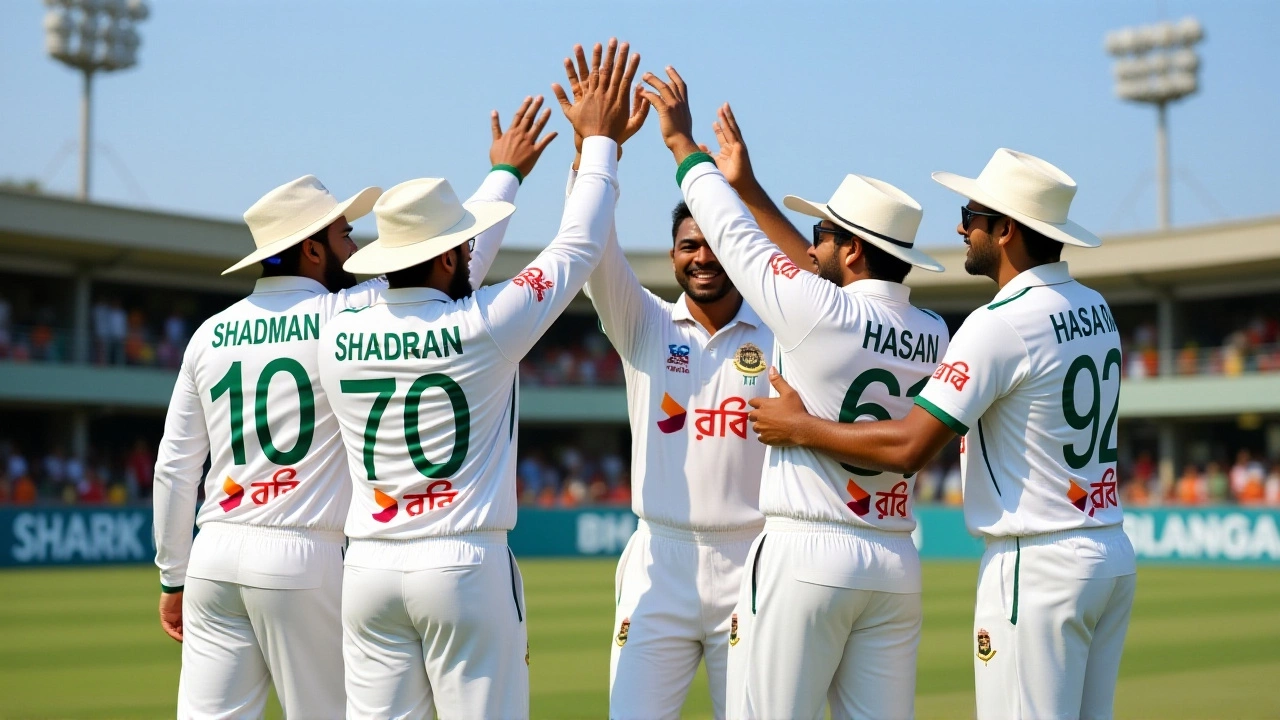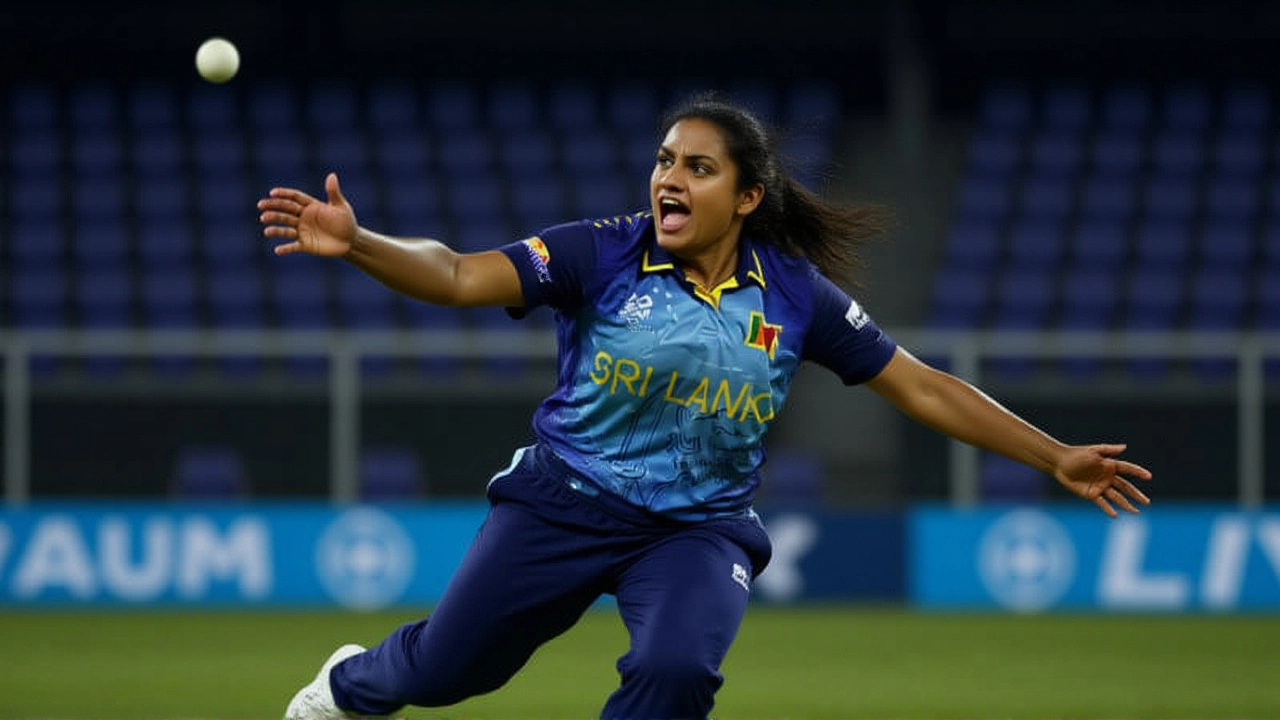When Australia wrapped up a two-Test sweep of Sri Lanka in February 2025, it wasn’t just another routine victory — it was a statement. On home soil, Sri Lanka had no answer to Australia’s batting depth, with Usman Khawaja smashing 232 — his highest Test score — and Steve Smith becoming only the 11th man in history to cross 10,000 Test runs. The twist? Australia lost both ODIs by massive margins, revealing cracks in their limited-overs setup even as they steamrolled Sri Lanka in the longest format. The series, played from January 29 to February 14, 2025, ended with Australia winning by an innings and 242 runs in the first Test, then by nine wickets in the second. But in the ODIs, Sri Lanka’s bowlers turned the tables — bowling Australia out for 107 in the second match, a score so low it felt like a flashback to the 1990s.
Test Dominance: A Batting Masterclass
The first Test, played at an undisclosed Sri Lankan venue, saw Australia post 654/6 declared. Josh Inglis, making his Test debut, joined the party with a century, while Steve Smith reached his 35th Test hundred. Sri Lanka, reeling from the start, collapsed to 165 in their first innings. On day three, they were 136/5, still trailing by 610 runs, with Dinesh Chandimal fighting hard for 63 not out off 115 balls. Mitchell Starc, the veteran fast bowler, ripped through the top order early, but even his two wickets couldn’t stop the avalanche. The second Test, starting February 6, was less dramatic but just as decisive. Australia’s 414 was enough to force Sri Lanka into a defensive shell — they managed just 257 and 231 in their two innings. Australia chased the target of 90 with ease, losing only one wicket.ODI Collapse: Why Australia Couldn’t Handle Low Scores
Here’s the thing: Australia’s ODI team looked out of sync. In the first ODI on February 12, Sri Lanka posted 214/10 — a low total by modern standards — and still won by 49 runs. Australia managed just 165, with no batter crossing 40. ESPNcricinfo noted that “Asalanka stands tall in old-fashioned low-scoring opening ODI,” highlighting how Sri Lanka’s top order held firm under pressure. The second ODI on February 14 was even more brutal. Sri Lanka posted 281/4, thanks to a blistering 82 from Nuwanidu Fernando, and then bowled Australia out for 107 — their lowest ODI total since 2018. The bowling attack, led by Pavan Rathnayake and Sonal Dinusha, exploited Australia’s middle-order fragility. The loss wasn’t just about runs; it was about mindset. Australia’s batters seemed unprepared for tight, disciplined bowling — a recurring issue since the 2023 World Cup.
A-Team Series: The Hidden Story of the Tour
While the main team flew home, a quieter, more telling story unfolded in Australia. In July 2025, Sri Lanka A toured Australia to face Australia A, under the guidance of former Test captain Tim Paine as head coach. The fixtures, confirmed by Cricket Australia in May 2025, were held at the Marrara Cricket Ground in Darwin. The two four-day matches ended in draws, but the performances told a different story. Jason Sangha of Australia A scored his maiden double century in first-class cricket — 202 runs — while Nuwanidu Fernando top-scored across both teams with 240 runs. Jake Weatherald, meanwhile, reached 5,000 first-class runs, a milestone few young players achieve before their mid-20s.The List A series, however, belonged to Australia A. They won 2-1. In the opener on July 4, Nathan McSweeney smashed 85* off 63 balls, while Sam Elliott took 5/14 — one of the most devastating spells in A-team history — to bowl Sri Lanka A out for 134 in 35.4 overs. Sri Lanka A bounced back in the second match, posting 294/7 with Fernando’s 82, and defeating Australia A by 51 runs. But in the decider on July 9, Australia A chased down 227 with 17.3 overs to spare, sealing the series. Oliver Peake and Zanden Jeh made their List A debuts here, both showing composure beyond their years. These aren’t just prospects — they’re the next generation.
What This Means for the Future
Australia’s Test dominance over Sri Lanka isn’t surprising — they’ve won 11 of their last 12 Tests against them since 2010. But the ODI losses? That’s a red flag. The team’s reliance on big scores and aggressive strokeplay is being exposed by disciplined, slower-paced attacks. Sri Lanka, meanwhile, showed they’ve rebuilt their ODI identity: patient, aggressive openers, and a bowling unit that can exploit conditions. Their A-team’s performance in Australia confirms it — they’re no longer just a Test side with flashes of brilliance.The A-team series was the quiet revelation. With Paine mentoring young players like Sangha and Weatherald, Australia’s pipeline looks stronger than ever. The fact that four players made their List A debuts in this series, and that two batters crossed 200 runs in first-class cricket, suggests depth. Compare that to Sri Lanka A, where Fernando, Mishara, and Rathnayake all posted impressive numbers — but without the same structure. Australia’s system is producing not just talent, but consistent performers.

What’s Next?
Australia’s next assignment is a home series against India in October 2025. The ODI losses to Sri Lanka will be dissected — especially the middle-order collapse against spin. Will they promote a spinner to the top order? Bring in a more defensive opener? The answers are coming. Meanwhile, Sri Lanka will look to carry their ODI momentum into their home series against England later this year. And for Australia A? The next step is selection for the upcoming World Test Championship cycle. Players like Sangha and Peake won’t be far from the national squad if they keep performing.Frequently Asked Questions
Why did Australia lose the ODIs despite dominating the Tests?
Australia’s Test team thrived on batting depth and disciplined bowling, but their ODI side struggled against Sri Lanka’s tight, low-scoring tactics. They lacked adaptability in chasing small totals and failed to rotate strike under pressure. Sri Lanka’s bowlers, especially spinners and medium pacers, exploited Australia’s middle-order weakness — a flaw not as exposed in Tests where longer innings allowed recovery.
Who were the standout performers in the Australia A vs Sri Lanka A series?
Nuwanidu Fernando (Sri Lanka A) led all batters with 240 runs across two first-class matches, while Jason Sangha (Australia A) scored his maiden double century in first-class cricket. Nathan McSweeney and Matt Renshaw were top scorers in the List A series, and Sam Elliott’s 5/14 in the first ODI was one of the most economical spells ever recorded in A-team cricket. Jake Weatherald also reached 5,000 first-class runs — a rare milestone for a player under 25.
How did Steve Smith’s 10,000 Test runs impact the series?
Smith’s milestone — reached in the first Test — added psychological weight to Australia’s dominance. At 35, he’s the oldest player to score a Test century on the tour, proving his longevity. His presence stabilized the middle order, allowing Khawaja and Inglis to play freely. It also signaled Australia’s ability to blend experience with youth — a model other teams are now trying to replicate.
What does the A-team series reveal about Australia’s future cricket strategy?
Australia’s A-team setup, under Tim Paine, is now a true talent incubator. Unlike past eras where fringe players were sent abroad to ‘learn,’ this series was structured: high-pressure games, clear performance metrics, and veteran coaching. The fact that debutants like Oliver Peake and Zanden Jeh performed under pressure suggests Australia is investing in mental resilience, not just technical skill. This could be the blueprint for future international success.
Is Sri Lanka’s ODI resurgence sustainable?
Yes — but only if they maintain consistency. Their win over Australia was built on disciplined bowling and calm top-order batting, not luck. Players like Asalanka and Fernando are now proven match-winners in low-scoring games. However, their Test team still struggles away from home. If they can develop all-format players — not just ODI specialists — they could challenge top teams in multi-format series by 2026.
Where were the A-team matches played, and why does it matter?
All matches were held at the Marrara Cricket Ground in Darwin, a venue rarely used for top-tier domestic cricket. Choosing this location was strategic: it forced players to adapt to unfamiliar conditions — humidity, slow pitches, and limited crowd pressure. It tested their mental toughness, not just their technique. That’s why performances here are seen as more telling than those in traditional cricket hubs like Melbourne or Sydney.
